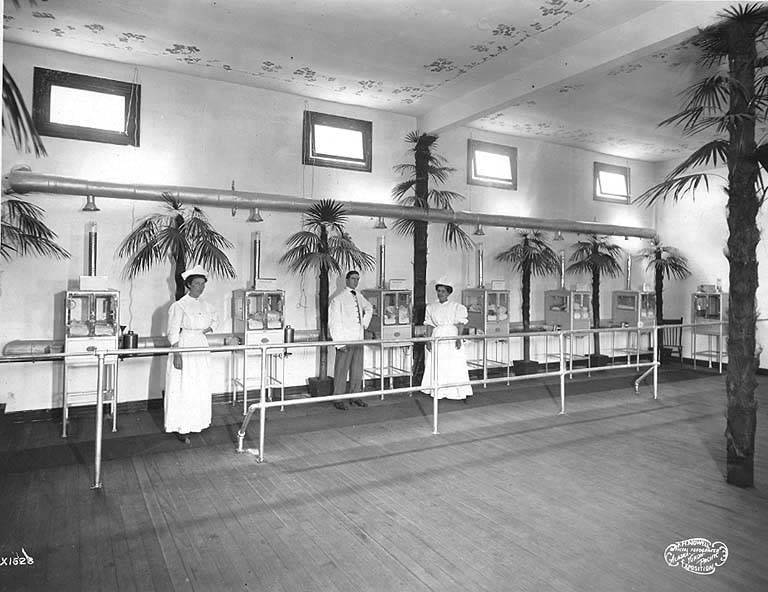
"As announced in 'The Seattle Daily Times' on February 14, 1909, 'The baby incubators will be seen at The Exposition, as well as W. H. Barnes with Princess Trixie, the educated horse.'"
These classic 1909 photographs, showing a baby incubator exhibition, were taken at the Alaska Yukon Pacific Exposition. Such sideshows were common at the time. From an historical article about the exhibit:
“Baby incubator exhibits were an expected feature on exposition midways from the 1896 Berlin Exposition on. Visitors to Omaha’s Trans-Mississippi and International Exposition in 1898, Buffalo’s Pan-American Exposition in 1901, St. Louis’s Louisiana Purchase Exposition in 1904, and Portland’s Lewis and Clark Exposition in 1905 experienced a similar concession. (At most of these, including the Lewis and Clark Exposition, the Baby Incubator Exhibit was managed by Dr. Martin Couney, the foremost promoter of the baby incubator sideshows at expositions. Couney’s Baby Incubator Exhibit at Luna Park in New York’s Coney Island ran from 1903 to 1943. Although A-Y-P’s Baby Incubator Exhibit bears a strikingly similar physical resemblance to Couney’s baby incubator shows, no connection between Couney and the A-Y-P has yet been discovered.)
As announced in The Seattle Daily Times on February 14, 1909, ‘The baby incubators will be seen at The Exposition, as well as W. H. Barnes with Princess Trixie, the educated horse.’ The display of human infants on the Pay Streak midway apparently elicited no protest from fairgoers (includingvisiting physicians), or from the local medical community.
Seattle already had a permanent (or at least seasonal) baby incubator exhibit: the Infant Electrobator concession at Luna Park in West Seattle. (An electrobator was an incubator heated by electricity.) Further details about this concession, where infants must have been rattled by the clatter of the wooden roller coaster and soothed by calliope music from the nearby carousel, appear to have vanished. It is possible that the A-Y-P exhibit and that at Luna Park were in some way connected.
French physician Alexandre Lion’s incubator, patented in 1889, was commonly used in baby incubator exhibits at expositions. These incubators varied greatly from the infant incubators utilized in modern neonatal intensive care units. The A-Y-P’s incubators regulated the temperature inside the unit and pulled in outside air for ventilation, nothing more. They would have been beneficial to well preemies needing no special care beyond steady warmth. The incubators exhibited at fairs and expositions had no ability to aid babies who could not breathe on their own, and there was at the time (and for many subsequent decades) no therapy for such children.
The A-Y-P Baby Incubator Exhibit apparently experienced no deaths, and it is unlikely that babies who lacked a very good prognosis would have been put on display for fear of negative public relations should they not survive, if for no other reason.”
Tags: Dr. Martin Couney

